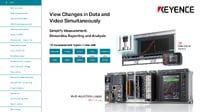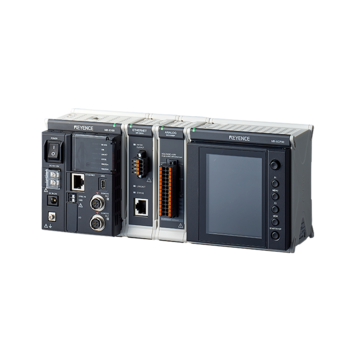Data Acquisition (DAQ)
How Data Loggers Ensure Safe Food Packaging & Storage
-
Tags:
- Temperature
The World Health Organization (WHO) estimates that approximately one in ten people fall ill from contaminated, spoiled, or expired foods. Food packaging data loggers continuously monitor the temperature and environment where our food is produced and processed. They keep track of and measure humidity, temperature, and even vibrations, as this keeps every aspect of food storage and packing tracked and regulated.
In addition to monitoring data, these devices are also equipped with real-time alert systems. Should any environmental parameter exceed a predetermined threshold, an alert will be triggered immediately, prompting operators to take action immediately to prevent spoilage. Furthermore, data is sent from the data loggers to a centralized data acquisition system so that all data can be analyzed and accurate quality assurance records can be maintained.
Choosing the Right Food Packaging Data Logger
For those in the food processing industry selecting the ideal food packaging data logger is a decision that directly impacts the integrity of the cold chain and overall food safety. With an ever-growing need for reliable cold chain data loggers and other food safety monitoring devices, there are certain devices on the market that just don’t fit the bill. The following are several key factors to look for when selecting the right food safety monitoring devices.
Temperature Requirements
Different items may require different storage conditions. For example, certain perishable items like dairy products, have a much narrower ‘safe’ temperature compared to items like fresh apples and oranges. Knowing the temperature parameters of a product helps determine which data logger can accurately track and maintain the ideal environment throughout the processing and packaging process.
Accuracy & Resolution
When it comes to food packaging data loggers, each device must be highly precise. These products are used to capture minute fluctuations that could affect product quality. High-resolution sensors make sure that any deviation from the optimal temperature is recorded and reported immediately to help safeguard overall food safety.
Real-Time Monitoring or Post-Event Analysis
Some operations may not need something as sophisticated as a food monitoring device with immediate alerts. Real-time monitoring is very effective in cold chain packaging where small fluctuations can quickly become big problems. However, in other environments, such as the processing of root vegetables, post-event data review may be acceptable as temperature fluctuations or humidity readings are not as strict.
Data Access & Connectivity
Many food safety monitoring devices have built-in displays, USB, or SD card interfaces. These devices are also, typically, Wi-Fi enabled which keeps them connected to the cloud for easy reporting and data analysis. This connectivity isn’t just important for data relay but also to keep sensors up to date without having to resort to shutting down production.
We’re here to provide you with more details.
Reach out today!

Best Practices for Using Data Loggers in Food Safety
To maximize the effectiveness of a food safety monitoring device, there are several best practices to follow in terms of installation, calibration, and maintenance.
- Proper Installation: Food packaging data loggers should be strategically placed at critical control points throughout the production, storage, and distribution stages. This proper positioning helps each device capture accurate environmental and temperature measurements, whether in cold chain packaging or temperature monitoring in food storage.
- Regular Calibration: All data loggers must be periodically calibrated to maintain their precision and reliability, and this is especially true for food packaging data loggers. Regular calibration checks help confirm that a sensor is operating within its specified range and that the integrity of the monitoring has not been compromised.
- Routine Maintenance: Keeping the equipment in optimal condition is key to a constant and uninterrupted data stream. Each data logger should be inspected during scheduled maintenance for wear and tear and environmental damage; especially for devices with subzero temperatures.
Following these best practices helps keep food packaging data loggers performing consistently and reliably.
The Future of Food Safety: AI & Smart Data Logging
Emerging technologies are arriving on the market in the form of smart food packaging, data loggers that can record longer, and cold chain data loggers that use AI to enable centralized data collection across the entire supply chain. These state-of-the-art food safety monitoring devices provide precise temperature monitoring (like the NR Series Data Logger) in food storage, helping to keep conditions optimal throughout the storage process.
These devices use AI to transform raw data into actionable insights by utilizing predictive analytics and automated inspections. AI-driven devices can also anticipate potential issues before they escalate, which helps prevent spoilage and waste.
Discover more about this product.
Click here to book your demo.

The Role of Data Loggers in Food Packaging & Storage
Data loggers (such as the Data Logger NR-500) are an essential tool in maintaining and monitoring critical control points in food packaging and storage. The applications of these sensors span almost every stage of production, described as the “Four Pillars”: Production, Processing, Distribution, and Consumption.
Production
During the production phase, data loggers monitor environmental conditions during the growing and harvesting stages. Data loggers will also be used more extensively in the initial storage of the product as continuous temperature tracking mitigates the risk of early spoilage. By maintaining precise conditions–or alerting when they fluctuate–these food safety monitoring devices reduce waste and keep ingredients prime for processing.
Processing
In processing facilities, data loggers measure not only temperatures but also humidity. This monitoring prevents contamination and preserves the product; in turn, this boosts the final product's quality and ROI. This stage benefits heavily from automated alerts as any deviation is promptly addressed to salvage the product.
Distribution
This is the most vulnerable stage in the supply chain. Wireless cold chain data loggers continuously track temperature and other data during transportation. This real-time monitoring gives drivers the ability to correct any conditions that fall below optimal, which helps reduce losses. With the automation of the data collection and transmission, these data loggers also cut labor costs and improve the overall efficiency of the supply chain.
Consumption
Finally, the end of the chain. Whether the product is sold in retail outlets or food service, these establishments use food safety monitoring devices to keep the product as fresh as possible before it reaches the consumer. Many retailers have an hourly schedule where an employee will check the temperature of coolers and freezers to ensure that every product remains at the perfect quality for the customer.
Compliance with Food Safety Regulations
Food packaging data loggers and cold chain data loggers provide automated record-keeping; this minimizes the risk of human error and helps producers adhere to food safety standards. For any organization involved in the production, storage, or distribution of food, non-compliance is not an option. Armed with detailed and automated logs, companies can demonstrate their commitment to safety and quality.
Are you ready to upgrade your food safety practices with food packing data loggers from KEYENCE? Explore our cutting-edge solutions and discover more resources to transform your temperature tracking for food procedures and stay compliant with industry standards.
Contact us today to learn more about our advanced data loggers for food storage and packaging!
Contact us to learn more about how our advanced technology can help take your business to the next level.
Contact Us



